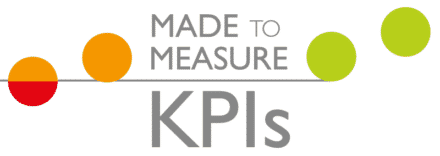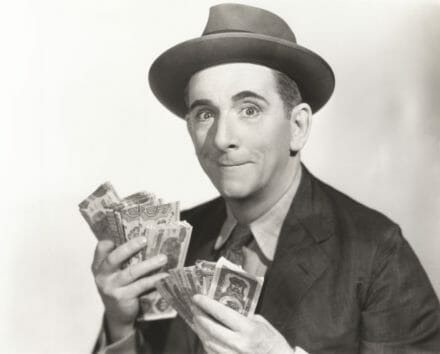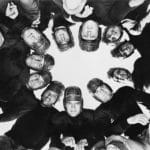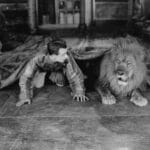Building a KPI Habit

Why a KPI habit is essential
A KPI that is never reviewed or acted upon might as well not exist. Worse than that, an unreviewed KPI is a kind of ‘tax’ on the organisation, a costly piece of information that was never looked at or acted upon. Forming a ‘KPI habit’, particularly for short-term KPIs, is an essential behavioural requirement to enable KPIs to have a positive impact on your business performance.
Why is KPI habit formation hard?
Why is it I check my email inbox several times a day but shy away from weighing myself? What makes social media so irresistible, yet expensive home-gym equipment often sits around, barely used?
The answer to these questions lies in the formation of habits and the way our brains seek rewards. The addictiveness of social media is not an accident, it’s the prized outcome of very careful design.
The challenge with building KPI habits
To be effective, some KPIs require regular review and action. Often these are operational measures, like queue length, wait times or stock levels.
If we want to steer team actions and behaviour using short-term KPIs, we need to make looking at those figures as hard to resist as glancing at your phone for new emails, checking your smartwatch fitness score for the day or checking your social media feed.
Let’s just be clear on what we mean by a ‘habit’. The definition I use is…
’Behaviours done with little or no conscious thought’
(Definition from ‘Hooked’ by Nir Eyal)
Most of the published work in the field of creating habit-forming products looks at software products, so we need a little lateral thinking to understand how those insights apply to KPIs and performance reports. The good news is that one of the most commonly used methodologies is fairly easily adapted to our needs.
The Fogg Method
BJ Fogg, a guru in this field, has developed a powerful three step method that will help you form and strengthen your performance measurement and reporting habits. It’s called the Fogg Method. Here are the three steps, along with some explanation…

Step 1: Get specific
What behaviour do you want?
Translate target outcomes into goals and behaviours
And be specific
What Step 1 of the Fogg method might mean in practice for performance measurement and management…
There’s a huge difference between saying ‘I’d like the team to do a regular performance review’ and ‘I would like you (the the team leader) to run a standing-up huddle every two hours, on the hour, following this agenda. It must last no more than 5 mins and cover these performance measures…’.
Which instruction is most likely to lead to a regular routine and ultimately the formation of a habit?

Step 2: Make it easy
How can you make the behaviour easy to do? (In our case this is developing a KPI habit, such are regular performance review).
Simplicity changes behaviour
Making the desired behaviour has a few angles:
- Time. The longer something takes the less likely people are to do it.
- Money. If there is some direct cost involved in the behaviour (for example, having to make a call using their own phone) or indirect cost (missing out on overtime) it will act as a strong disincentive to take action and ultimately not form a habit. Will they gain financially from doing it, for example hitting a team performance target?
- Physical effort. If the action you intend to habitualise involves having to walk up some stairs, get out of a chair or go out in the cold, for example, physical effort or discomfort will discourage habit formation.
- Brain effort. Having to think too hard puts people off taking action. This brain-effort deterrent becomes even stronger if people are tired and/or busy.
How this might translate into practice for performance measurement and management…
For manual data gathering: habit formation is critical for good quality manual data capture. Let’s say we need the team to regularly record the temperature of the food chiller cabinets in a coffee shop…
Example: Make it easy for Chaos Coffee temperature recording
- Use well laid-out printed sheets (minimise time and brain effort), ready-printed with spare copies stored in a clearly marked place (minimise time and physical effort), near to where the measurement takes place (minimise physical effort).
- Provide clear, step-by-step, instructions for the measurement at the top of every sheet (minimise brain effort).
- Make sure the user does not have to hunt around for sheets and provide pencils (minimise brain and physical effort).
- Avoid losing the recording pencil by putting it on a string attached to the clipboard (saves time, brain and physical effort).
- Have the temperature probe already in place, so the user does not have to wait for the probe to ‘get up to temperature’ (reduces time and brain effort - brain effort saved as the individual does not have to decide when temperature has been achieved).
(Remember to think about all aspects of KPI buy-in when designing your KPI system)
Step 3: Trigger the behaviour
What will prompt the behaviour?
Some triggers are natural; others you must design.
No behaviour happens without a trigger.
A bit more about triggers: Types of triggers
Triggers are the nudge to take action. It may be as simple as a reminder popping up on a screen, an email landing in your inbox or a team leader prompting the team to do something. Our lives are filled with triggers, but we often barely notice them. For many, their day starts with an external trigger (alarm clock goes off) and is followed by a firework display of internal triggers that gets us washed, dressed and packed for the day ahead. The best triggers are ones that are sparked by your own memory or by some minor but reliable environmental factor.
Triggers are the vital final step in the Fogg model, our cue to take action. Triggers fall into two camps…
-
- External triggers tell use what to do next by placing a prompt or information in the users’ environment. Alarm clocks, to-do lists, timed texts, smart watch alerts, calendar alerts or Post-its on your PC monitor all fall into this category.
- Internal triggers prompt the user on what to do next through associations stored in their memory. Going into the bathroom first-thing in the morning will trigger you to remember to clean your teeth. Leaving the house will remind you to check you have your keys, phone and wallet. We have thousands of internal triggers every day but, because of their nature, they are almost imperceptible to us.
Quite often we use a mixture of internal and external triggers. I have to remember to look at my ‘to-do’ task manager on my phone but, once I remember to do this, there is a list of ‘External triggers’ listed to get me to act on my tasks.
What this might mean in practice for developing our 'KPI habit'…
There are a selection of external triggers we can use…
- Calendar reminders
- Meetings
- Agenda items (though there often needs to be a pre-meeting trigger, otherwise this just catches out the unwary)
- Performance boards
- Alarms
Formal performance reviews are fine, and a good start, but KPIs become so much more useful and powerful when they become a seamless part of our view on the world.
Our ultimate goal must be to create internal triggers. These are more powerful and do not require sustained effort or vigilance once they are established - just some occasional nurturing and care to make sure we don’t accidentally break them.
Visual prompts can be a very good way of sparking internal triggers. A well placed performance board can really grease the wheels when it comes to forming internal KPI review triggers.
How to tell when KPI habit ‘triggers’ have become internal
Our end goal is the whole team actively ‘pulling’ performance information. When a team member walks in, do they request and show a genuine interest in the performance figures? Do the shop-floor team show a keen interest in how the days figures are progressing, how they are doing compared with other teams, whether they are close to breaking a record? When performance figures referred to in every day work conversation you know that you are well on your way to building ‘the KPI habit’.
Tip: Harnessing intrinsic and extrinsic rewards to embed triggers
Anyone who has raised kids knows that a tactically used reward can help embed good habits. Be careful though, this can backfire. It's important to understand the two types of reward (intrinsic and extrinsic), when to use them and what can go wrong. Check out What are intrinsic rewards and do they work? for more detail on this important topic.
The Fogg Method, a KPI Example: Chaos Coffee queue busting
So how would the Fogg Method apply to an operational situation, let’s say ‘queue time’ in a coffee shop?
Step 1: Get specific
What behaviour do you want?
For non serving staff to help with service whenever queues start to build, so that customers never to have to wait more than 5 minutes for their order.
Translate target outcomes into goals and behaviours:
When the average wait time hits 4 mins or more, pull staff off cleaning, kitchen duties and non-legally-required breaks to ‘bust the queue’.
Step 2: Make it easy
How can you make the behaviour easy to do?
To make the decision a ‘no brainer’ we need to give clear guideline on when the team need to call ‘queue busters’.
The Chaos Coffee team discuss this and decide that they could have marks on the edge of the serving counter, with each mark showing a typical wait time of +1 minute. When the queue goes past the +4 minute mark the team lead needs to find extra staff if possible.
Step 3: Trigger the behaviour
What will prompt the behaviour?
Your team will probably be at their most busy at the exact time the queue goes past the 4 minute wait mark. The Chaos Coffee team brainstorm ideas for alerting the team when the queue is building, here are some of their ideas….
- A bell, with a sign inviting queuing customers to ring it for a free ‘loyalty point’ if they find themselves standing by it. This could irritate staff and possibly be ‘gamed’ by the customers (deliberately hanging back to ‘ding’ the bell), but it is very cheap and simple to try out.
- A ceiling sensor, or floor pressure plate, that can detect when someone is stood directly under it for more than a few seconds - lighting an indicator in direct view of the team.
- A tablet/computer game fixed at the 4-minute-wait marker for the customers to play on. When a bored customer starts to use it, the action of using it (or perhaps the tablet waking from sleep) could alert the serving team that the queue has built back to that point. It should also be possible to automatically record that tablet activity throughout the day, giving a record of the ebb and flow of queues throughout the day. Of course this could backfire, and you may struggle to get customers to move down the queue for service, if the game is too addictive.
What would you do? Can you think of any other ways of gently alerting the overworked team that they need more hands on deck?
Questions to help you focus on KPI habits
Triggering KPI habit actions
- Who uses the KPIs currently? Are these the people who should use them?
- What specific actions do you want them to get into the habit of doing?
- What is the user doing immediately prior to the point you want them to record data or review KPI data?
- What internal triggers could prompt your KPI user to take the action you want them to?
- What external triggers might help train the users’ internal trigger?
Try and list out as many external triggers as possible - including crazy ideas…
Action: Questions to help you focus on KPI habits
Focus your habit formation efforts on a small number of critical KPIs.
- Pick three really crucial measures whose use you want to become habitual and run through the three steps of the Fogg method for each one.
- Identify issues/potential issues with habit formation for the three selected KPIs.
- Discuss multiple potential solutions, including the slightly insane ones, with your team.
How to create effective KPI habits
The Fogg Method for applied to effective KPI habits
Step 1: Get specific
Clearly identify the KPI habits you want.
Translate target outcomes into goals and behaviours
And be specific
Step 2: Make it easy
Think of practical ways to make the KPI habits as easy as possible.
Step 3: Trigger behaviour
Think carefully about what will trigger the desired KPI habits
Triggering habit actions
- Who uses the KPIs currently? Are these the people who should use them?
- What specific actions do you want them to get into the habit of doing?
- What is the user doing immediately prior to the point you want them to record data or review KPI data?
- What internal triggers could prompt your KPI user to take the action you want them to?
- What external triggers might help train the users’ internal trigger?
Try and list out as many external triggers as possible - including crazy ideas.
Questions to help you focus on KPI habits
Focus your habit formation efforts on a small number of critical KPIs.
- Pick three really crucial measures whose use you want to become habitual and run through the three steps of the Fogg method for each one
- Identify issues/potential issues with habit formation for the three selected KPIs
- Discuss multiple potential solutions, including the slightly insane ones, with your team









Interesting article, especially the internal trigger part. For me this sounds like the main key. And I would like to question the external trigger part.
Let me take you in the following situation. Normally in the morning I use an alarm to prevent me to oversleep. If I know I would be going to for example Disneyland Paris I do not have to use an alarm at all, even if I have to get up an hour earlier than usual. I would be awake on time and full of energy. So what makes this different and it is in fact not even a habit? On the other hand if it is cold and rainy outside, you do not have much on your agenda…how tempting is it to stay cosy in your bed for another 15 minnutes?
What I am missing in the Fogg is the urge/need to have a KPI. You can enforce it (which is the feeling I get with the external trigger) or there is somekind of intrinsic motivation in the sense that there is a reward (for example sales reps running their revenue report at the last day of the month, every 5 minutes to see if that specifc order has been entered which grant them their target/bonus), you feel responsible for the KPI and can influence it (for example with the rising energy prices you are looking into your gas consumption more often than before the prices were high), taking pride/ownership or you simply get punished (big boss is watching you, so you are in a “survival” mode).
What I question regarding the external trigger is the human behaviour. Looking, more forced, at a KPI will this lead to a required/requested action? Or remains it more by mere looking at…
I agree Ronald. The Fogg method covers the habit formation part of behaviour but not the motivation aspects, so is not a ‘cure all’ solution. I also agree that internal triggers beat external triggers every time, but I think that external triggers eventually become internalised, so they can be useful in certain situations.